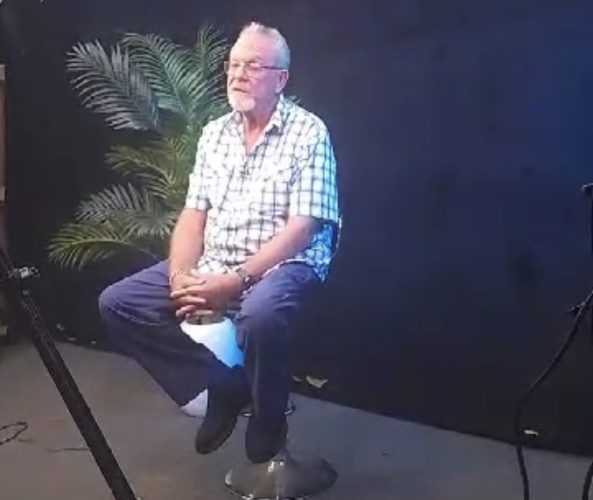For the longest time, it’s been said that farming is a lucrative job with many other benefits attached like self provision, healthy consumption and so on.

Farming has long been heralded as a potential game-changer for economies worldwide, especially in developing nations like Nigeria.
Among the key staples, maize farming is recognized for its significance in food production and industrial applications.
However, local farmers struggle to earn a good living as a result of challenges they are faced with in the course of their business.
Furthermore, these challenges continue to hinder productivity, particularly due to outdated farming methods and a lack of proper mechanization.
In an interview with IbrandTv, De-Jager Jacobus Prinslo the manager of Pally Agro farms, a major food processing company, highlighted some of the challenges limiting the productivity of maize farming in the country.
According to the Prinslo, many of these challenges begin with improper land clearing.
“People are just cutting trees without removing them properly,” he explained. This not only leads to issues with erosion but also impairs the efficiency of crop cultivation.
“Without contours, waterways, or adequate soil structures, farming lands are highly susceptible to erosion, which hampers productivity.”
High Cost Of Mechanised Farming
Correct bush clearing, however, is not cheap, and the financial constraints facing local farmers make it difficult to adopt these practices.
Also, he told IbrandTV that the high cost of mechanized farming is another barrier.
“Mechanized farming requires substantial capital investment,” he continued, “and the average local farmer cannot afford the necessary tractors or equipment.”
In addition, the farm manager said this financial burden has prevented farmers from embracing modern methods that could significantly boost yields.
Also, the expert emphasized the difficulty of persuading farmers who have relied on traditional farming techniques for generations to switch to modern, mechanized practices.
“It’s hard to convince them to change after hundreds of years of farming the same way,” he added.
Furthermore, another critical issue raised was the lack of knowledge about soil health and fertilizer use.
“Many farmers are unaware of the benefits of soil analysis, which determines the appropriate type of fertilizer for specific soil conditions.
“Farmers here don’t even know there’s something like soil analysis,” he remarked.
“Instead of using custom-blended fertilizers based on soil needs, they rely on just two or three NPK blends, which aren’t tailored to their land.”
Seed quality is also a significant factor in the low yields observed among local farmers. Hybrid maize seeds, known for their higher productivity, are expensive, leading many farmers to replant seeds from previous harvests, which often results in suboptimal yields.
Other Challenges
“Very few farmers are planting hybrid maize because it’s too costly,” the speaker explained. “They keep seeds from the last harvest, which reduces overall productivity.”
In offering solutions, the expert urged farmers to focus on quality over quantity.
“Rather than planting large areas inefficiently, it’s better to cultivate one hectare properly,” he advised.
“Planting ten hectares with improper techniques, insufficient fertilizer, and incorrect chemicals will only lead to poor results.”
Additionally, the speaker expressed hope that local farmers would embrace these changes.
By adopting better practices, such as proper land preparation, mechanization, soil analysis, and using hybrid seeds, small-scale farmers can increase their productivity and contribute to the overall success of maize farming in the country.
Also Read: Kogi Farmers Pray For Rainfall
Farming may hold the potential to revolutionize agriculture, but for this to become a reality, the adoption of modern practices and techniques is essential.
In conclusion, the agricultural expert pointed out, “Do small, but do it right,” offering a hopeful message to farmers striving to improve their yields and livelihoods.
How Lucrative Is Fashion Designing?

